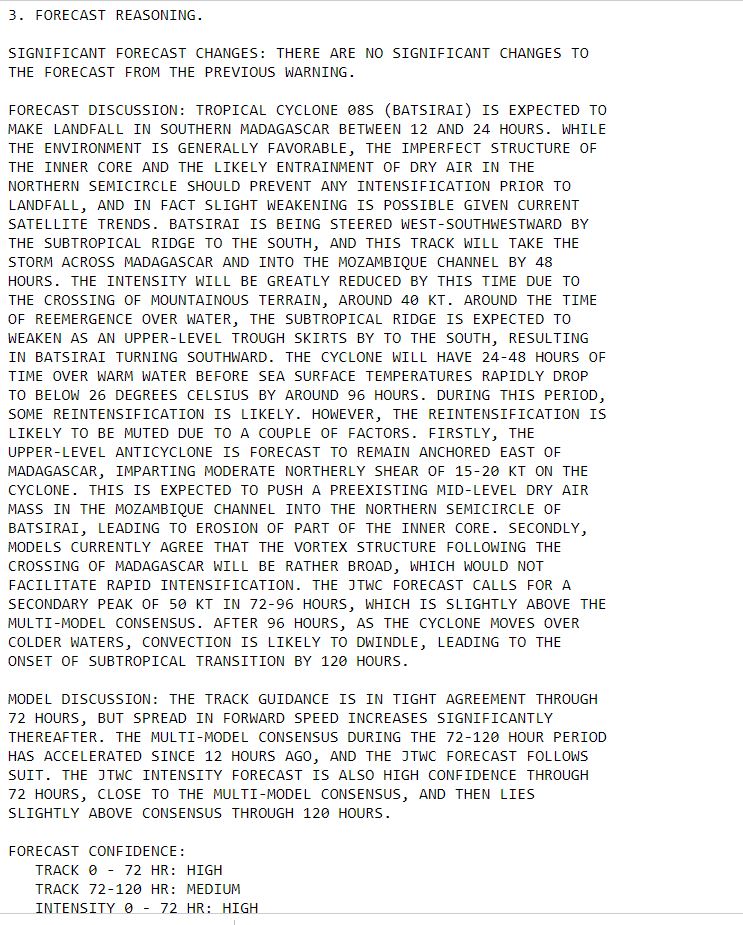
NZ's #ExtremeWeather event is not over.
Simulations of the area of tropical moisture that brought torrential rains to the South Island now show a storm system moving south into the Tasman Sea resulting in intense rainfall across Northern NZ through Feb 12th.
Simulations of the area of tropical moisture that brought torrential rains to the South Island now show a storm system moving south into the Tasman Sea resulting in intense rainfall across Northern NZ through Feb 12th.
Forecasts for this system's exact impact remain highly uncertain but four major global forecasting models are in agreement that some form of extreme weather for NZ will be result.
These are the latest ensemble tropical storm "spaghetti" track graphics for storms north of NZ.

These are the latest ensemble tropical storm "spaghetti" track graphics for storms north of NZ.


The event is expected to begin within 24 hours these are four different models showing the intense area of atmospheric moisture moving over Northern NZ this morning (Sunday) NZT. 







And these four model simulations update the PWAT (precipitable water) picture as of Monday morning. Typically areas of dark red and purple such as you see in these plots will produce heavy rain, especially when moving southwards into colder air. 







The storm is not expected to be particularly intense in pressure terms though some of the models show it strengthening and it could do so.
The simple physics of a very large mass of very wet water moving over NZ for several days will produce #extremeweather.
The simple physics of a very large mass of very wet water moving over NZ for several days will produce #extremeweather.
These are the two latest GFS and ECMWF model forecasts wrt to air pressure - as you can see they are broadly similar - but cannot be relied on beyond the next three days - if SP09 develops into a stronger storm, whatever is about to happen will change.
The next four animations show four different "deterministic" (i.e. physics based) computer model simulations of what could happen to the very wet air mass. Firstly Canada's CMC.
Secondly we have the Australian ACG model (which as explained in an earlier thread [2 days ago] quoted below) is in its relatively early stages of development.
https://twitter.com/althecat/status/1489204504520179714?s=20&t=Fni3ZWLxwZvCaYLgyE8qpw
The Canadian model is closely associated with the American GFS model which you see here - and which is the most sophisticated - and which settled on this scenario earliest.
And finally we have the European @ECMWF model - the 2nd mature tropical weather model which continues to have a slightly preferable outcome with most of its impacts (at least in this run) expected in the North Island.
@ECMWF In summary we have four "not great" possible scenarios for this #ExtremeWeather event - similar but different.
Add in the fact that the orchestrator in this event, namely SPO9/92P, is still weak and a long way away and all this turns into a major headache for forecasters.
Add in the fact that the orchestrator in this event, namely SPO9/92P, is still weak and a long way away and all this turns into a major headache for forecasters.

The models have been changing significantly between runs and as this develops the @weathermodels_ GFS IWVT (Integrated Water Vapour Transport) animation will likely be the best means to keep track of what to expect.
This plot combines Water, Wind and Pressure data in one.
This plot combines Water, Wind and Pressure data in one.
These plots are from the preceding run showing the picture at 96, 132, 144 and 168 hours (12th Feb) by which time the model expects this to be over. 







Here we have four sequential simulation outcomes, from Feb 3, Feb 4 and Feb 5 model runs for this theoretical end-date for this event from the one model.
But note all four are likely to be wrong and we will only know with some degree of certainty what will happen at 48 hours.



But note all four are likely to be wrong and we will only know with some degree of certainty what will happen at 48 hours.




That said, as this event is initiating today, we can also say with some degree of confidence that this new phase in the ongoing atmospheric river event associated with this tropical convection system will effect the North Island - and possibly in a fairly extreme fashion.
We currently have for possible rainfall long range rainfall outcomes to get an idea about what this might look like. The first was used in the OP and comes from the GFS Model.
The second from the @ECMWF and the clear and dramatic difference between the two relates to the path of tropical storm of interest SP09/92P.
Here are the current rainfall solutions from all four models discussed in this thread, two detailed, the other two regional.
IMO all indicate a serious enough threat to justify informing people and enabling them to make whatever preparations they need to make.



IMO all indicate a serious enough threat to justify informing people and enabling them to make whatever preparations they need to make.




While there remains a lot of uncertainty about how much rain will fall where and when, we certainly have reason to be concerned that a lot of rain could fall almost anywhere in NZ as a result of this dangerous weather system.
/ENDS
@Threadreaderapp unroll
@Threadreaderapp unroll
• • •
Missing some Tweet in this thread? You can try to
force a refresh












